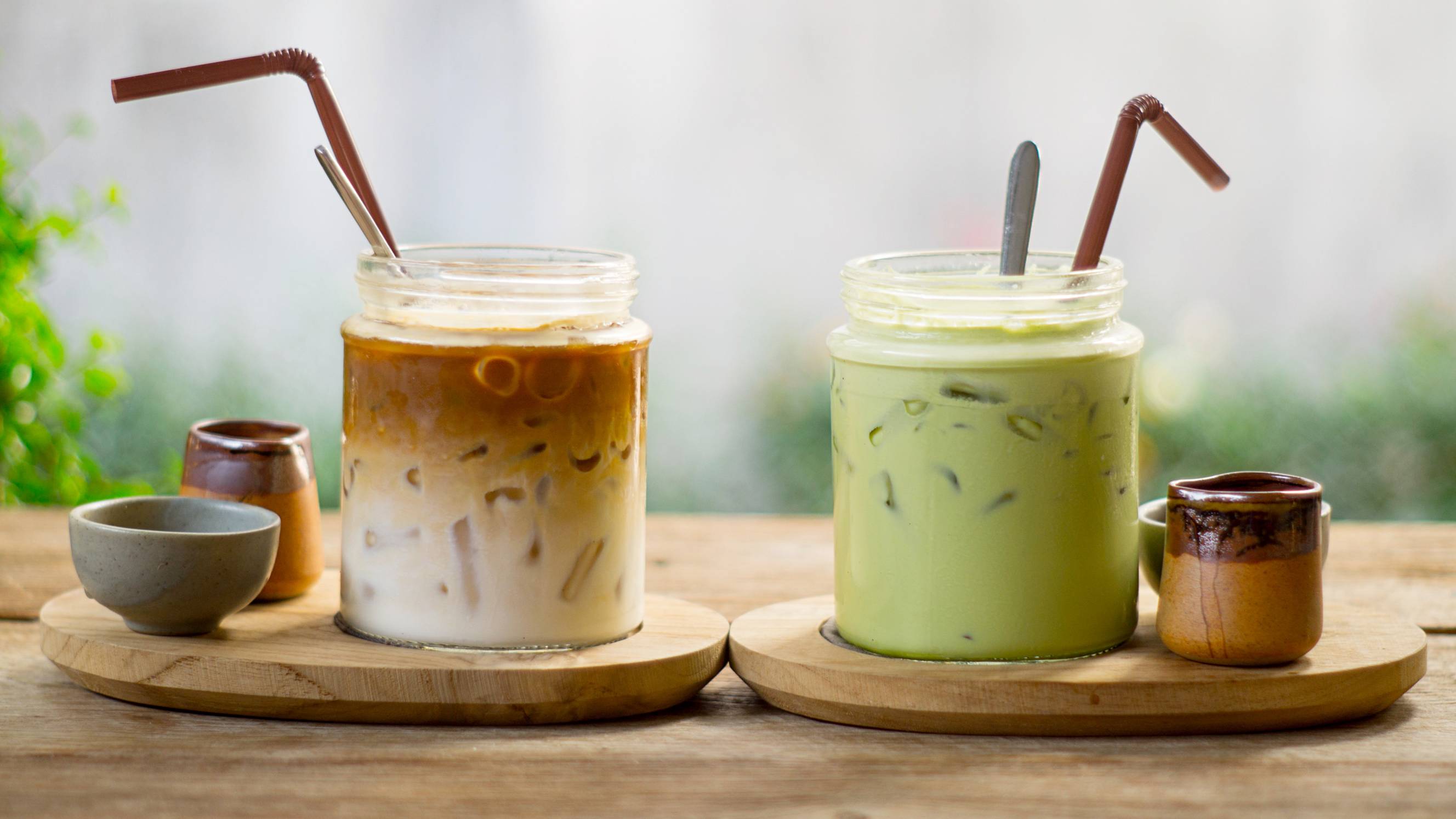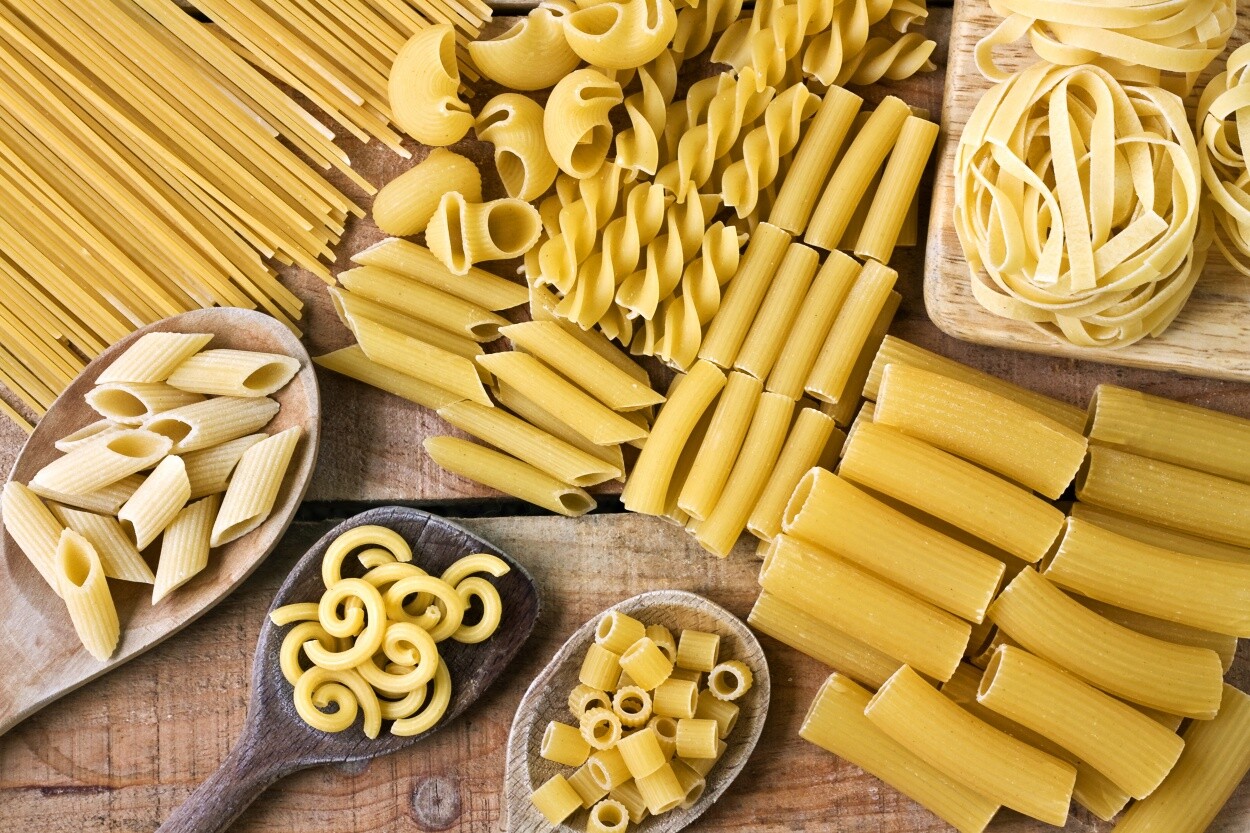
- Home/
- Comparisons/
- Grocery Delivery/
- Spaghetti vs Linguine
Spaghetti vs linguine: Which pasta should you choose?
Comparing spaghetti and linguine in terms of shape, thickness, texture, and more.
Published on

Written by Angela A.
Staff Writer
Read more about our contributor
Key Facts
- Spaghetti is a long, thin pasta that is typically round and ideal for rich sauces.
- Linguine is a flat, slightly thicker pasta that pairs well with lighter sauces and seafood dishes.
Spaghetti or linguine—which should grace your plate tonight? If you’ve ever found yourself torn between these two beloved pasta types, you’re not alone. Understanding the differences can make a real impact on your meal.
This guide will break down the subtle yet significant distinctions between spaghetti vs linguine, from their shape to their optimal sauce pairings. Dive in and see which pasta deserves the spotlight at your next gathering or cookout!
What is spaghetti?
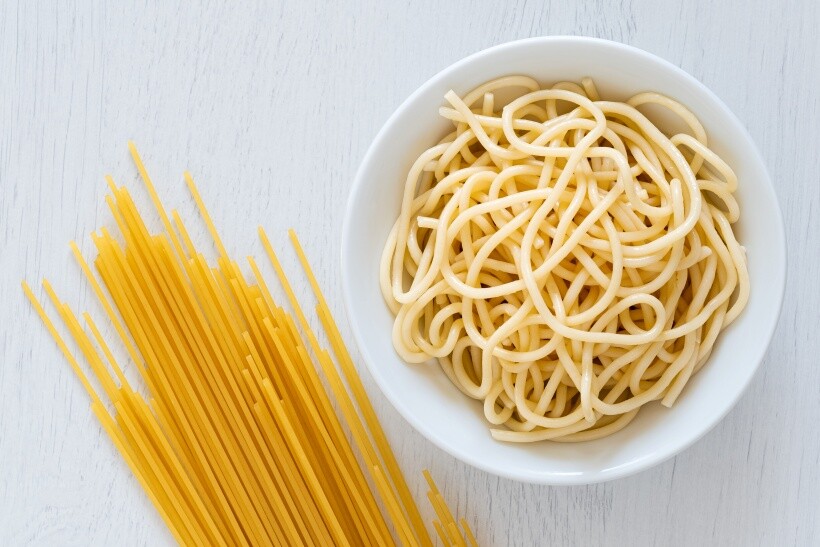 A simple presentation of classic spaghetti pasta. (Source: iStock)
A simple presentation of classic spaghetti pasta. (Source: iStock)
Spaghetti is a long, cylindrical pasta made from durum wheat semolina, and it’s one of the most popular pasta types worldwide. Originating from Sicily, this iconic noodle is often called ‘small strings’ due to its long, round shape resembling thin tubes.
The difference between spaghetti and noodles is often blurred. However, remember that spaghetti is made from semolina flour, while noodles can typically be made from various ingredients such as rice or buckwheat.
What is linguine?
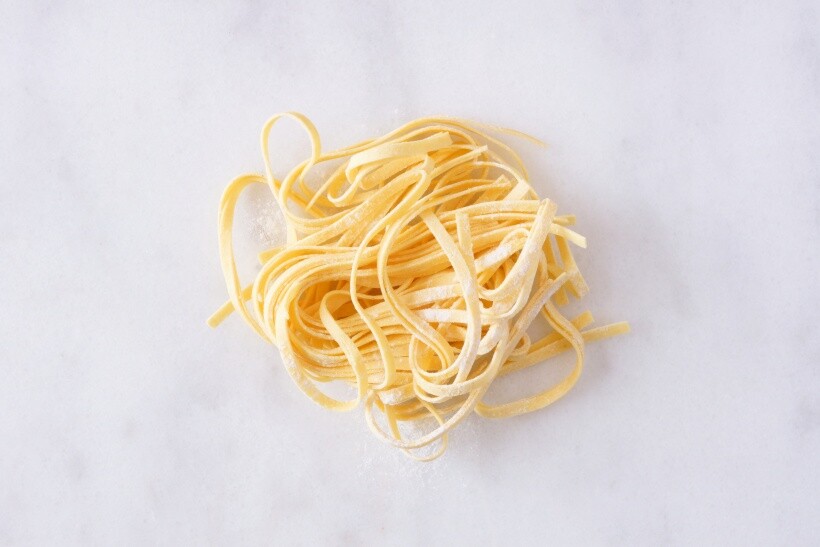 A traditional Italian pasta, linguine is perfect for creamy or seafood sauces. (Source: iStock)
A traditional Italian pasta, linguine is perfect for creamy or seafood sauces. (Source: iStock)
So, what is linguine pasta? It’s a long, flat pasta also made from durum wheat semolina and eggs. It’s shaped like flattened, elliptical strands.
Originating from Genoa, Liguria in northwestern Italy, the name ‘linguine’ actually means ‘little tongues,’ which is a fitting description of its form. Typically, it’s about 10 inches long and 3 millimetres wide, making it a bit flatter than spaghetti but not as wide as fettuccine.
Aside from this difference between fettuccine and linguine, the texture is also unique. Linguine has a more delicate and subtle bite.
Linguine vs spaghetti: What’s the difference?
While both are popular types of pasta made from similar ingredients, is linguine the same as spaghetti? Not quite! This section will help you explore what sets these two delicious pastas apart.
In terms of shape and thickness
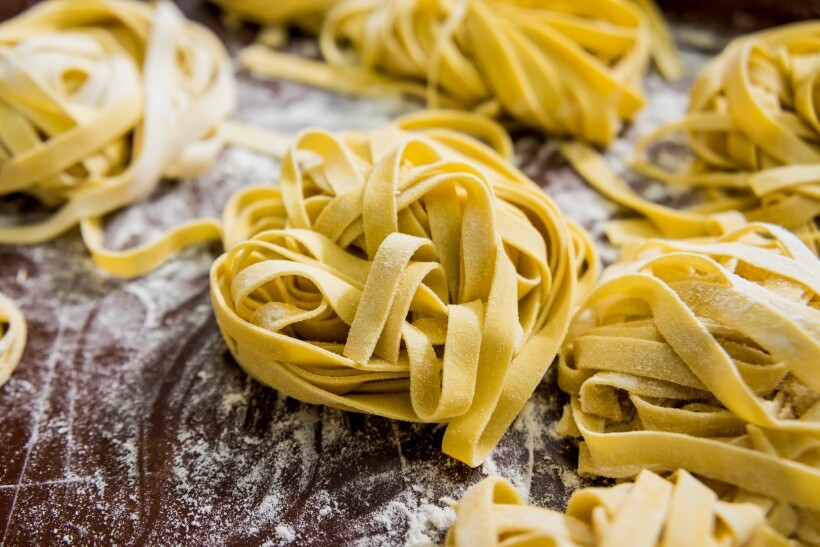 Artisan-style linguine pasta prepared for a variety of sauces. (Source: iStock)
Artisan-style linguine pasta prepared for a variety of sauces. (Source: iStock)
When identifying the differences between linguine and spaghetti, pasta shapes and thickness are two defining factors.
Spaghetti features long, cylindrical strands that give it a distinctive and classic appearance, with a generally round cross-section. Its thickness can vary, with thinner versions known as spaghettini.
On the other hand, linguine has a long, flat, elliptical shape that’s wider than spaghetti. This unique shape alters its look and influences how sauces cling to it.
In terms of texture
When it comes to texture, spaghetti’s smooth and cylindrical shape makes it perfect for lighter sauces. It often cooks to al dente, providing a firm bite that’s enjoyable in many traditional dishes, such as spaghetti and meatballs.
On the other hand, linguine’s flat and slightly curved design increases its surface area, so it can hold onto sauces more effectively. This texture makes it great for oil-based ingredients and creamy sauces.
In terms of sauce pairing
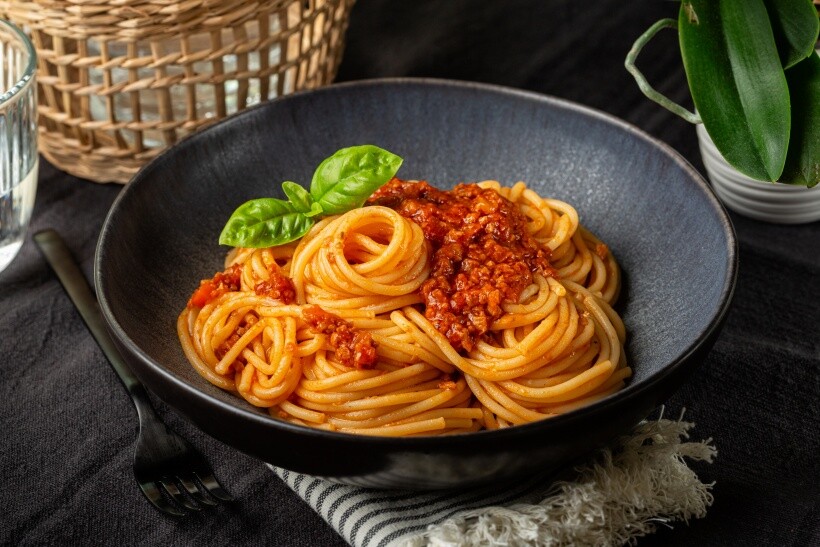 Spaghetti with rich tomato meat sauce and fresh basil. (Source: iStock)
Spaghetti with rich tomato meat sauce and fresh basil. (Source: iStock)
Spaghetti is best suited for smooth, light sauces because its round pasta shape doesn’t hold onto thicker textures well. Classic pairings include marinara, carbonara, and pesto. Still, you probably wouldn’t want to use it with chunky tomato-based sauces like spaghetti and meatballs or Bolognese since they won’t cling effectively.
Regardless, if you’re looking to whip something up yourself or aiming to hire a personal chef to cook for you, spaghetti works great for simple, quick meals.
In contrast, linguine noodles are more of an all-around pasta that can handle both light and thick sauces thanks to their flat shape. They pair beautifully with olive oil, cream sauces, butter-based dishes, and even seafood sauces like linguine alle vongole. Craving Italian food? Linguine with clam sauce or shrimp scampi is an excellent, hearty meal.
People comparing linguine vs tagliatelle may think that they are interchangeable. However, linguine tends to be more delicate than tagliatelle, which can handle chunkier sauces better.
In terms of cooking time
For spaghetti, thin varieties like spaghettini take about 8-10 minutes, while regular spaghetti requires 10-12 minutes. Both should be cooked al dente for a firm texture, and you can finish them in the sauce for better absorption.
Linguine has a similar cooking timeframe but with slight variations. Fresh linguine cooks in 1-4 minutes, while dried linguine takes 9-13 minutes. Like spaghetti, it should be boiled in salted water and finished in the sauce to fully absorb the flavours.
Overall, the cooking times for both pasta types are comparable, but slight adjustments are necessary based on freshness and thickness. Using a gas or induction cooktop can also affect how quickly the water boils, so keep that in mind when measuring cooking times.
In terms of calorie and carbohydrate content
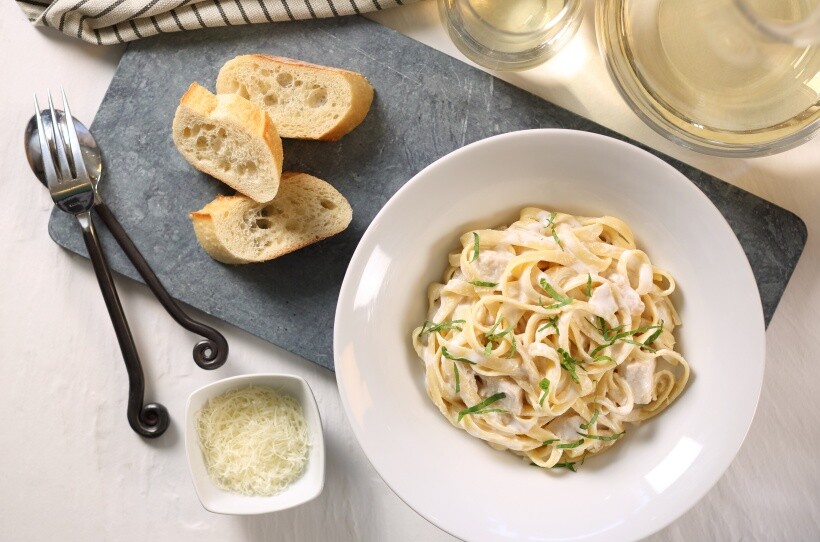 Creamy linguine-style fettuccine Alfredo paired with fresh bread slices. (Source: iStock)
Creamy linguine-style fettuccine Alfredo paired with fresh bread slices. (Source: iStock)
When uncooked, pastas like spaghetti and linguine have roughly 158 calories per 100g. However, whole wheat options in both categories tend to have slightly fewer calories and higher fibre content.
In terms of carbohydrates, cooked spaghetti contains about 37g per cup, while linguine has about 53g per 100g portions. The whole wheat versions also have a slightly lower net carbohydrate count.
What does this mean? You don’t have to completely give up your favourite pasta dishes if you’re watching your calorie and carbohydrate intake. Instead, opt for whole wheat options and practice portion control to enjoy spaghetti and linguine without the guilt.
Additionally, incorporating more vegetables into your meals can balance out your pasta dish. Add some sautéed butternut or Kent pumpkin and some roasted bell peppers to amp up the nutrient content, while also adding texture and flavour. It’s a win-win!
In terms of price
Spaghetti and linguine can vary significantly based on brand, quality, and type. Typically, you can find store brands for both pastas priced $0.90 to $4.70 per 500g for spaghetti and $2 to $6 per 500g for linguine. Premium and organic options usually cost more because of higher production costs, while gluten-free or high-protein varieties also come at a premium.
If you’re looking for the best value, buying in bulk or opting for larger packages can help lower the cost per serving. This approach is especially useful if you enjoy pasta regularly and want to save money.
For those who’d rather not spend hours in the kitchen, consider the alternative of having your own personal chef at $150 to $400—a great, hassle-free way to enjoy your favourite dishes without worrying about price tags or cooking.
Skip the grocery line: Get your pasta delivered straight to your door with Airtasker
Why stop at deciding what pasta to use? You can simplify your cooking and meal prep even further through the Airtasker platform.
Imagine having someone handle your grocery shopping for you, ensuring you get fresh ingredients delivered right to your door. Book a Tasker who can get you the perfect bread to complement your pasta—because who doesn’t love a good loaf?
Post a task today and connect with pros ready to take the hassle out of your kitchen routine.
Learn more about our contributors

Written by Angela A.
Staff Writer
Angela Apolonio is an experienced writer with a Biology background. She writes about home tips, car upkeep, gardening hacks, and food facts, bringing a unique blend of science and practicality to her work. As a wife and a mother, she knows the value of iron-clad routines, so she's passionate about sharing what works for her with everyone else. She loves making everyday life simpler and helping readers find fresh ideas to bring more joy into their spaces.
Spaghetti vs linguine
Spaghetti |
Linguine |
|
|---|---|---|
Shape and Thickness |
Long, cylindrical strands |
Long, flat, elliptical strands |
Texture |
Smooth and firm |
Slightly curved |
Sauce Pairing |
Best with light, smooth sauces |
Pairs well with oil-based, cream, and seafood sauces |
Cooking Time |
8-12 minutes, depending on thickness |
9-13 minutes for dried, 1-4 minutes for fresh |
Calorie and Carbohydrate Content |
Approximately 158 calories per 100g, with 37g of carbohydrates per cup when cooked |
Similarly has 158 calories per 100g, but with 53g of carbohydrates per 100g portions |
Price |
$0.90 to $4.70 per 500g |
$2 to $6 per 500g |
FAQs on spaghetti and linguine
Tagliatelle is a long, flat ribbon-like pasta slightly wider than linguine, which is long and flat but elliptical. Tagliatelle best suits hearty meat sauces, while linguine works well with lighter sauces.
No, although both noodles and spaghetti are made from flour and water, spaghetti is a specific type of long, cylindrical pasta. Noodles vary widely in shape and ingredients and are often used in various global cuisines.
Yes, you can substitute linguine for fettuccine, but remember that fettuccine is wider and works better with heavier sauces. Linguine may offer a different texture.
Find grocery delivery experts, fast
Post a task
Related articles
